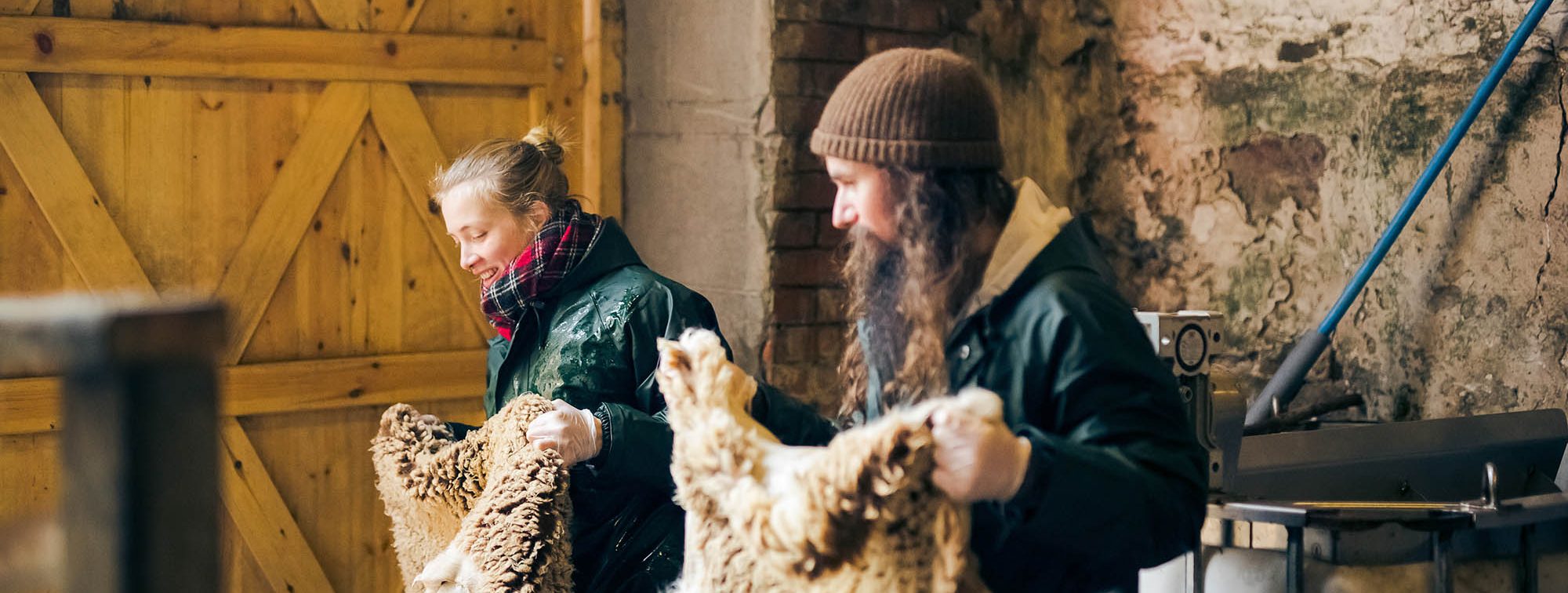
Words by Shane Kurup
Photography by Paul Read
The bucolic surrounds of Cupar in the former Royal Burgh of Fife is not a place that you would associate with industrial activity. But its gently undulating landscape conceals a rich history of leather tanning that is testament to a pre-industrial age when cottage industries and locally sourced materials weren’t just niche, ‘sustainable’ ventures, but the norm.
The area’s leather-making heyday has been consigned to the history books, but on the edge of the Falkland Estate – the former playground of Stuart monarchs – a forward-thinking micro-tannery is quietly striving to reignite the trade.
Woodland Tannery was founded in 2017 by Peter Ananin, who grew up in rural Aberdeenshire where his father worked as a forester. Ananin would often accompany his father during his daily rounds of managing the land and its animals. “He would regularly get called out to dispatch deer that had been hit on the road. We would administer the last rites to the animal, giving it a final meal before he gave it a clean, humane death,” recalls Ananin. “As a child, I remember thinking it was a shame that the hides went to waste – we often buried them in the woods. Sadly, everyone in the area had forgotten how to tan them”.
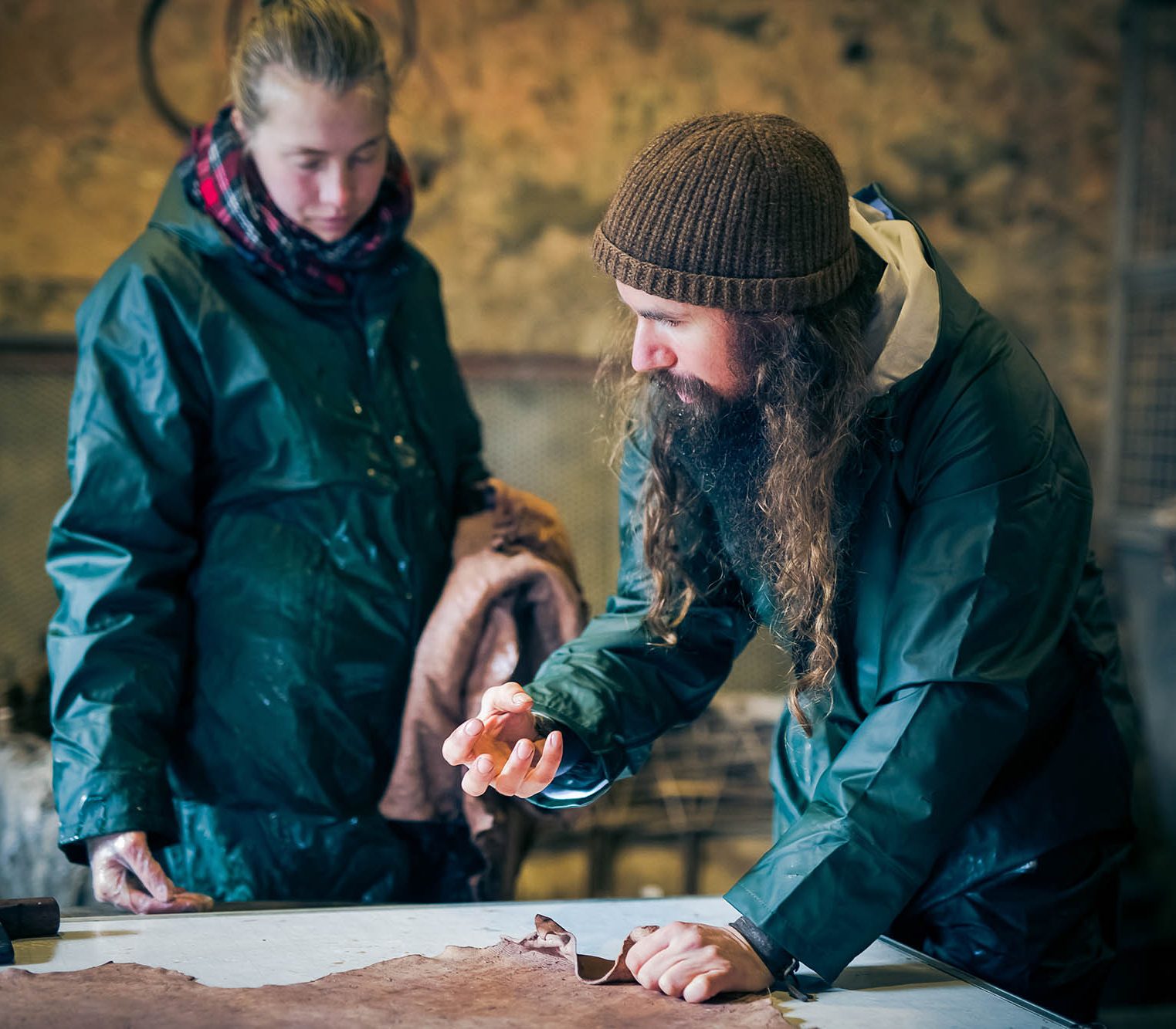
After studying design at Dundee’s Duncan of Jordanstone College of Art & Design, these childhood memories prompted Ananin to start reading about old tanning methods, leading him to establish his first tannery in Dundee in 2015, where he made his own equipment by rewiring old washing machines. At this time he travelled to the Methow Valley in the US state of Washington to study traditional tanning methods. “Some of the older, sustainable tanning methods like oil, smoke and bark tanning have survived in the US and Canada, whereas they have been all but lost in the UK due to large-scale mechanisation. My time there really progressed my knowledge,” he recalls.
On his return to Scotland, Ananin moved his tannery to the current Falkland Estate site, where he set up in an old stone stable. The move here was strategic; it was a stone’s throw from an organic, field-to-fork farm with an on-site abattoir that processed farmed deer, providing the key raw material for the business that in most other locales would go to landfill.
When you enter through the aged-wood stable door of the building, a rich, tea-like scent pervades the air – a mix of sweet green and a deep English breakfast brew. It is emanating from the various simmering vats, which are filled with tanning solutions derived from local oak and willow bark. Tanning tools are scattered on surfaces, and further inside there are sunken pits containing pickling solutions and lime for loosening hair on skins. The building is very much off-grid, so Ananin installed recycled solar panels to provide power. It’s testament to his ideals for ensuring that the business is as circular as possible in its operations. “Our methodology focuses on utilising waste materials from farming and forestry to produce high-quality leather and actually nourish the landscape” he explains. The deer, goat and salmon skins tanned at Woodland are all by-products from land management culls and the food industry, while the wood bark used for the tanning solutions is waste from the timber trade and basket makers.
The business has thrived and has supplied a wide variety of clients with its artisanal products, from bark-tanned leather for traditional Scottish sporran makers and sheepskins for the BBC series “Outlander”, to deer leather for Whyte & Mackay whisky distilleries and rawhides for drum makers throughout Europe.
“When you enter through the aged-wood stable door of the building, a rich, tea-like scent pervades the air.”
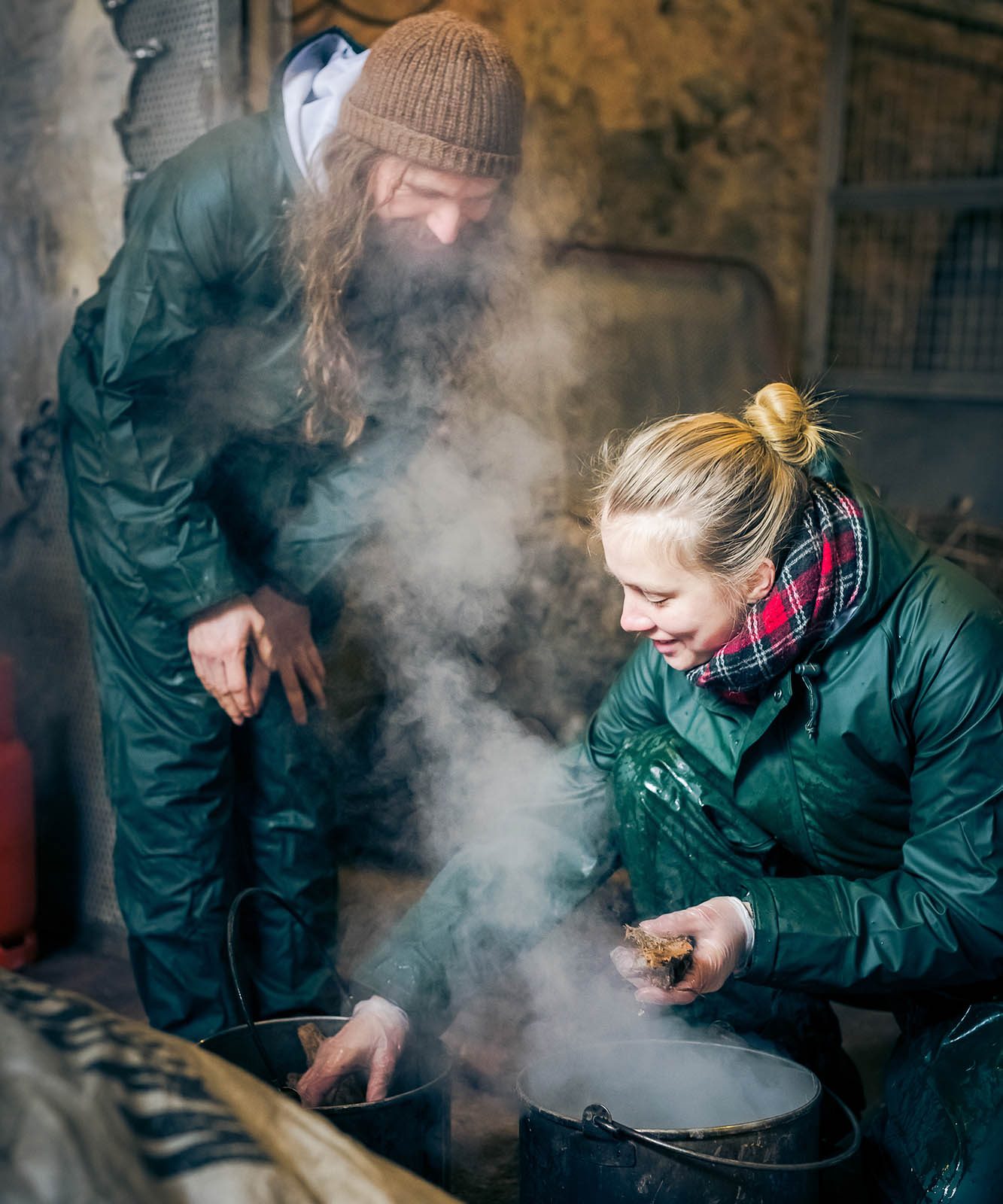
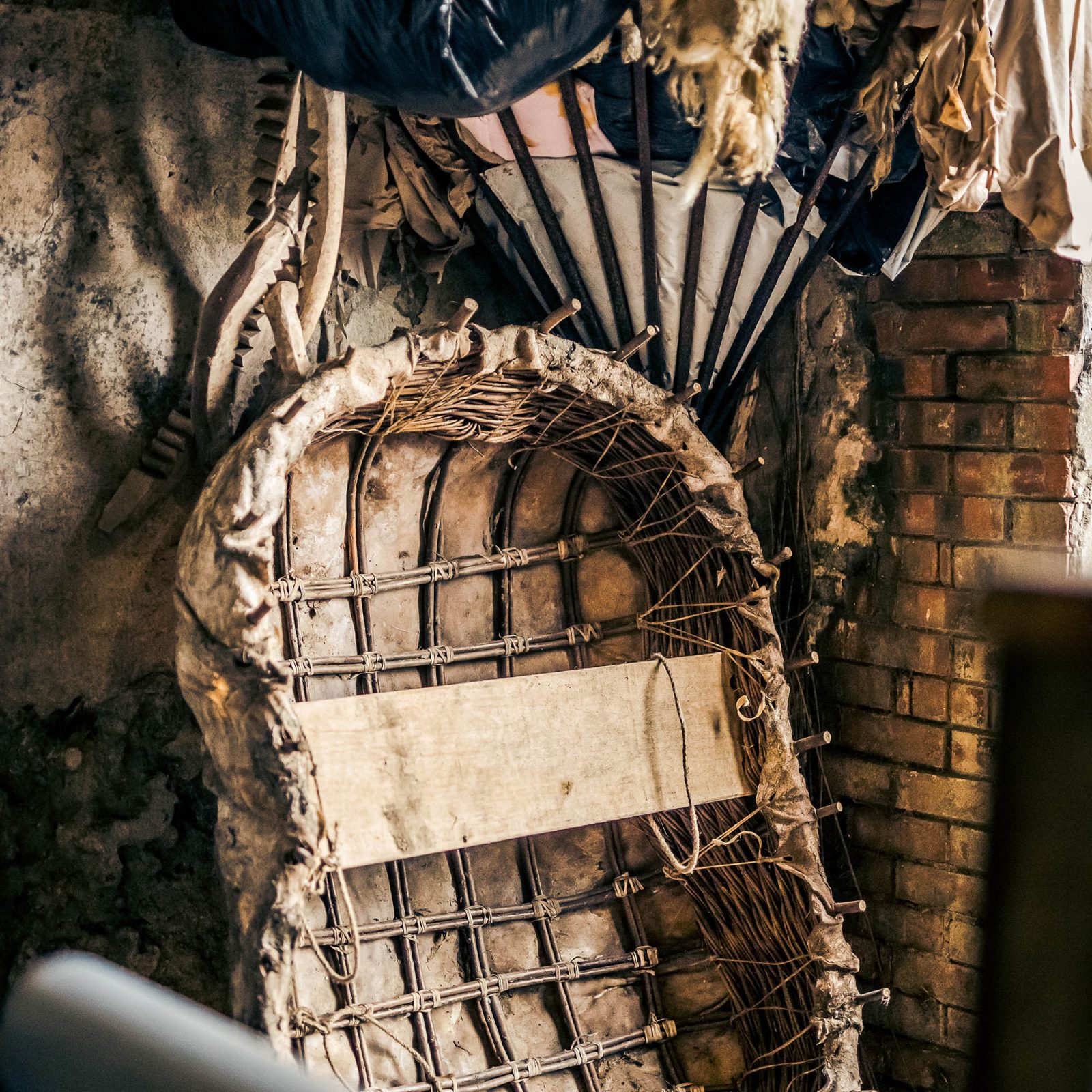
Income increased by 50% from 2021–2022 and to help meet demand, Ananin has recently taken on an apprentice, Lisa Krause, who started at Woodland Tannery in January 2023. Krause, who was born in Germany and raised in the Netherlands, studied environmental philosophy before spending several years globetrotting. During this time she went on a wilderness immersion trip to Norway, where she worked with traditional tanner, Lynx Vilden. “I learnt the basics of bark tanning fish skins – and I was hooked! I became really interested in preserving ancestral wisdom for modern times”. After completing a Master’s in environmental education at Edinburgh University and settling in the Cairngorms, Krause came across Woodland Tannery. “I was led there as it’s one of the very few traditional tanneries in Scotland. Peter’s work and use of traditional techniques really inspired me to deepen my knowledge of the craft and learn to work with the materials of the land.”
The three-year apprenticeship will see Krause hone her skills in a wide range of techniques, including bark and oil tanning, liming and preservation methods. Peat bog tanning is also on the agenda – an ancient method that involves submerging hides in naturally occurring peat bogs for six months to a year. It was once commonplace in Scotland and Woodland Tannery presents it as another string to its ecological bow.
A typical day for Krause at the tannery begins with discussing the day’s agenda with Ananin, before prepping. “I’ll often start with setting up scraping beams and tools needed for fleshing. We will flesh salted hides for a few hours, then wash and hang them to drip before they go into the lime,” explains Krause. After hanging the hides in the drying room, Krause will apply treatments for other hides at different stages of the tanning process, from trimming to washing, to pickling and submersion in the bark solution vats.
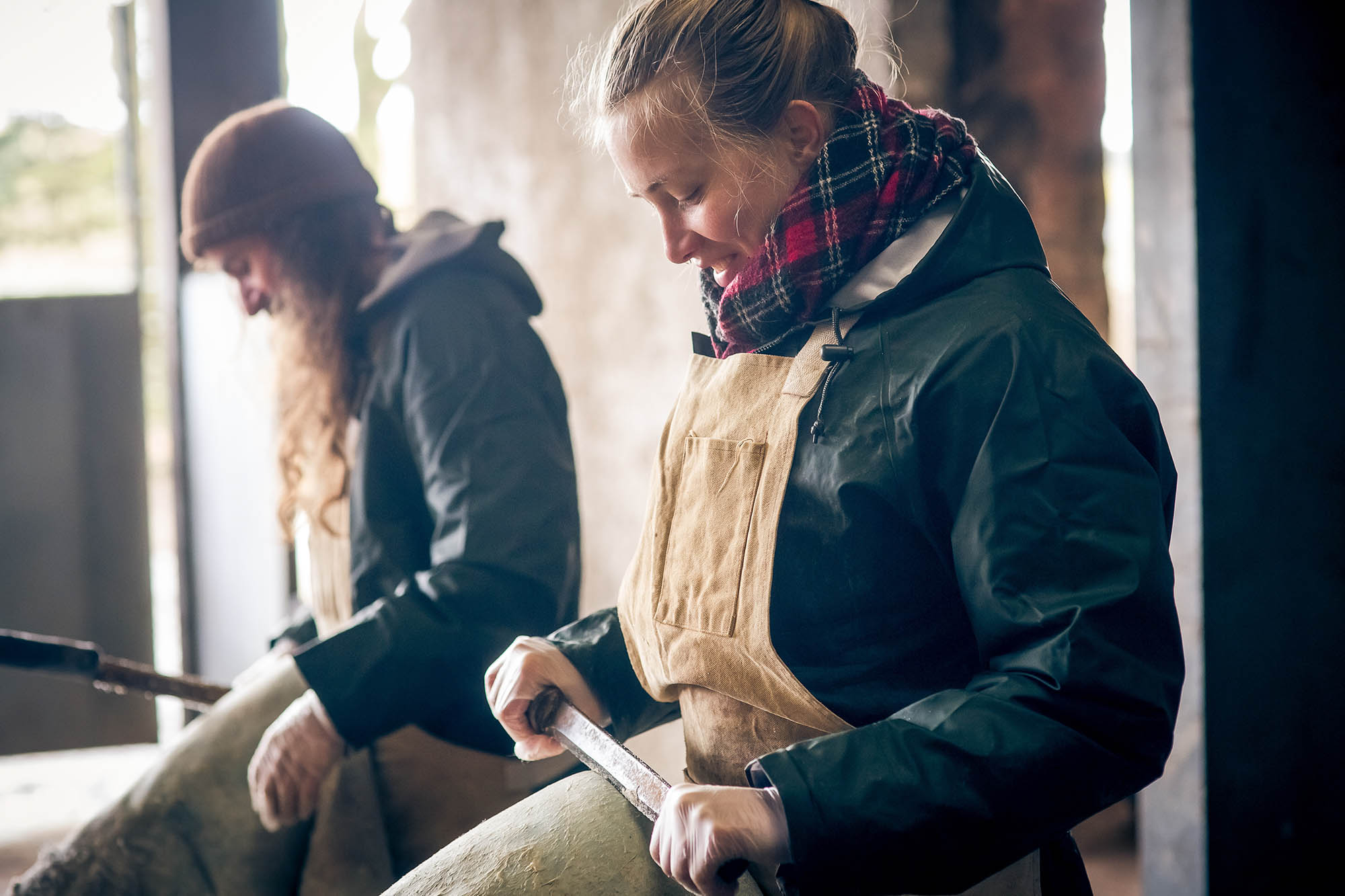
Of course, such a role is not without its challenges. The rural location of the tannery building, and its age, means that it is often cold in winter and the work is physically demanding. But for Krause, these hardships are balanced by her deep interest in the environment and working in tandem with nature. “Being close to the land, not sitting in an office and using my hands to transform something that would go to waste into a beautiful piece of leather, rawhide or buckskin is incredibly rewarding,” she says. It’s a way of thinking that has seen a resurgence in our increasingly digitised society, where a day’s work is conducted by tapping a keyboard or swiping a screen, without anything tangible to show for it.
For Ananin, being a small, agile business means it can more easily adapt to the current climate – an attribute that recently came into its own after the economic fallout from Covid-19 caused the closure of the farm and abattoir next door. This lack of access to raw material has necessitated a move to new leased site near Kenmore in Perthshire, where a local abattoir supplies deerskins. Ananin’s long-term plan is to purchase a piece of land in the area and establish a permanent facility for production and education. “It would allow us to produce a full range of sustainably tanned leathers, including peat and bark leathers, to showcase our principles and products,” he says.
As for Krause, she also hopes to establish her own traditional tannery in Braemar, and the desire to pass on the skills she treasures is part of her philosophy, too. “I’d love to have a bigger space myself to set up a micro tannery and teach others the skills in workshops.”
Through their love of traditional craft skills and sheer determination, this enterprising pair is sowing the seeds of a future in artisanal tanning that is perfectly aligned with the very modern concept of going back to nature.
READ MORE
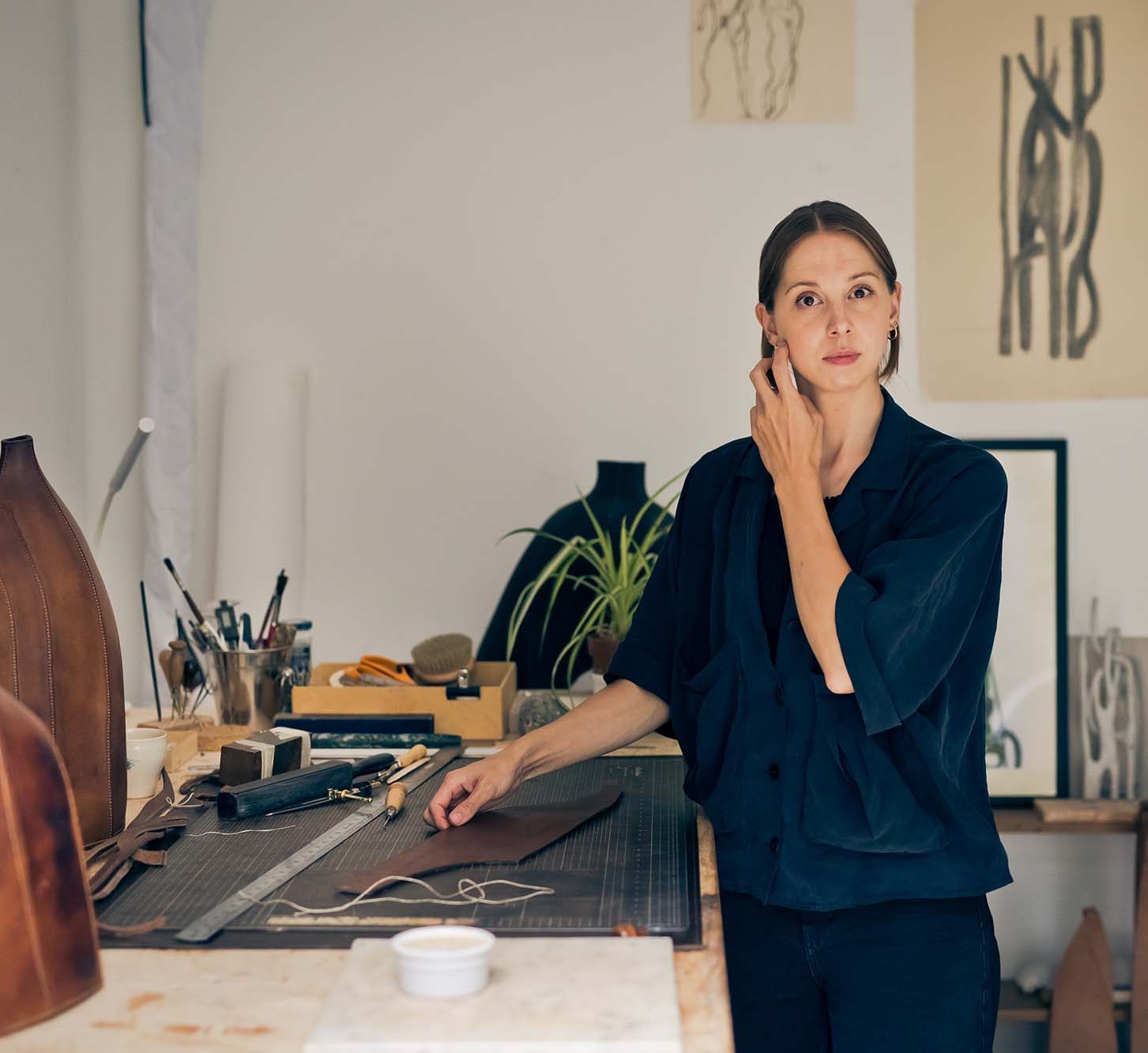
Dream Maker
In her sleep, Frances Pinnock finds inspiration for her figurative leather sculptures.
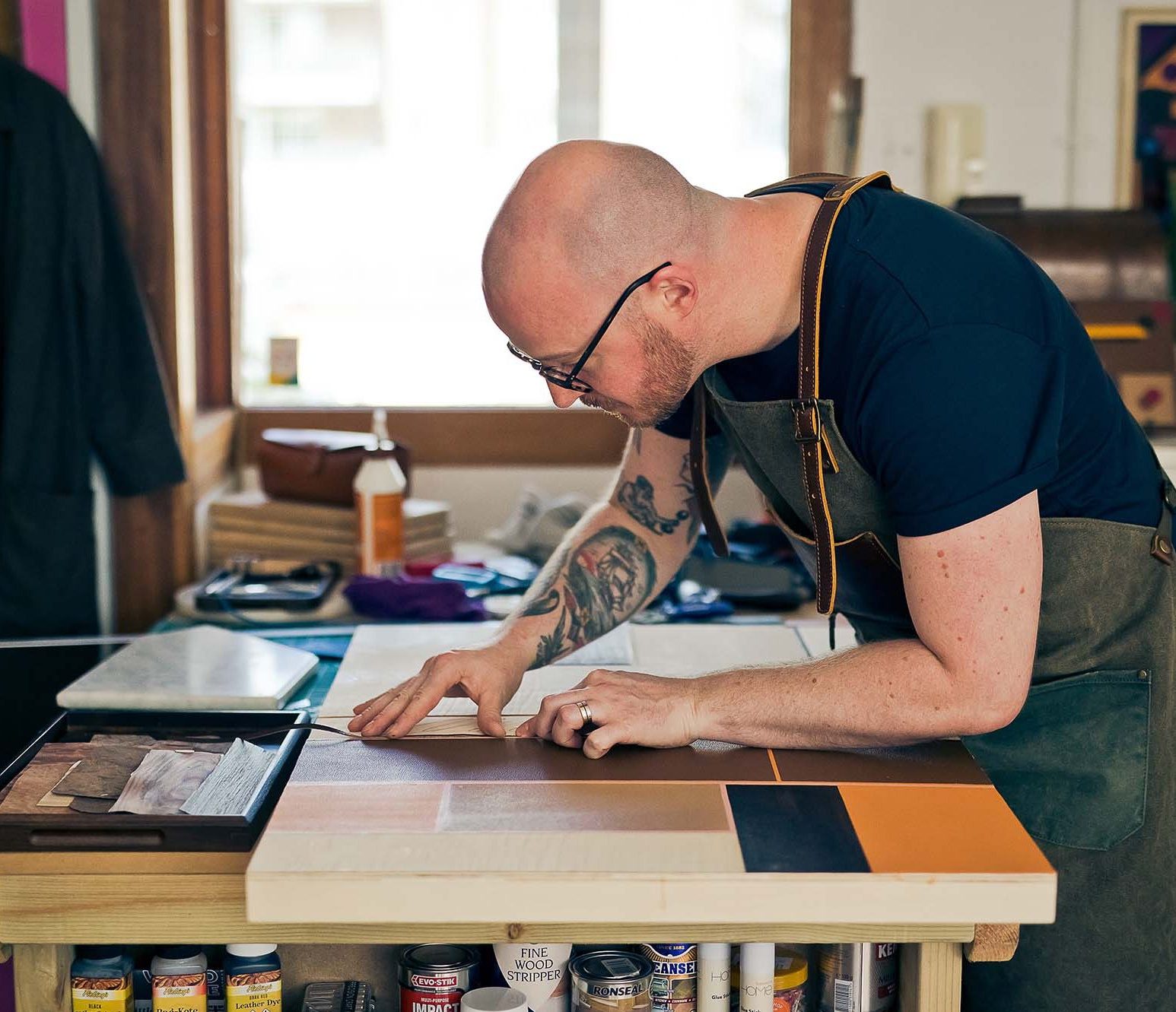
Magic Eye
Carl Fox creates puzzle-like pieces of interior art by using offcuts from luxury leather fashion brands.
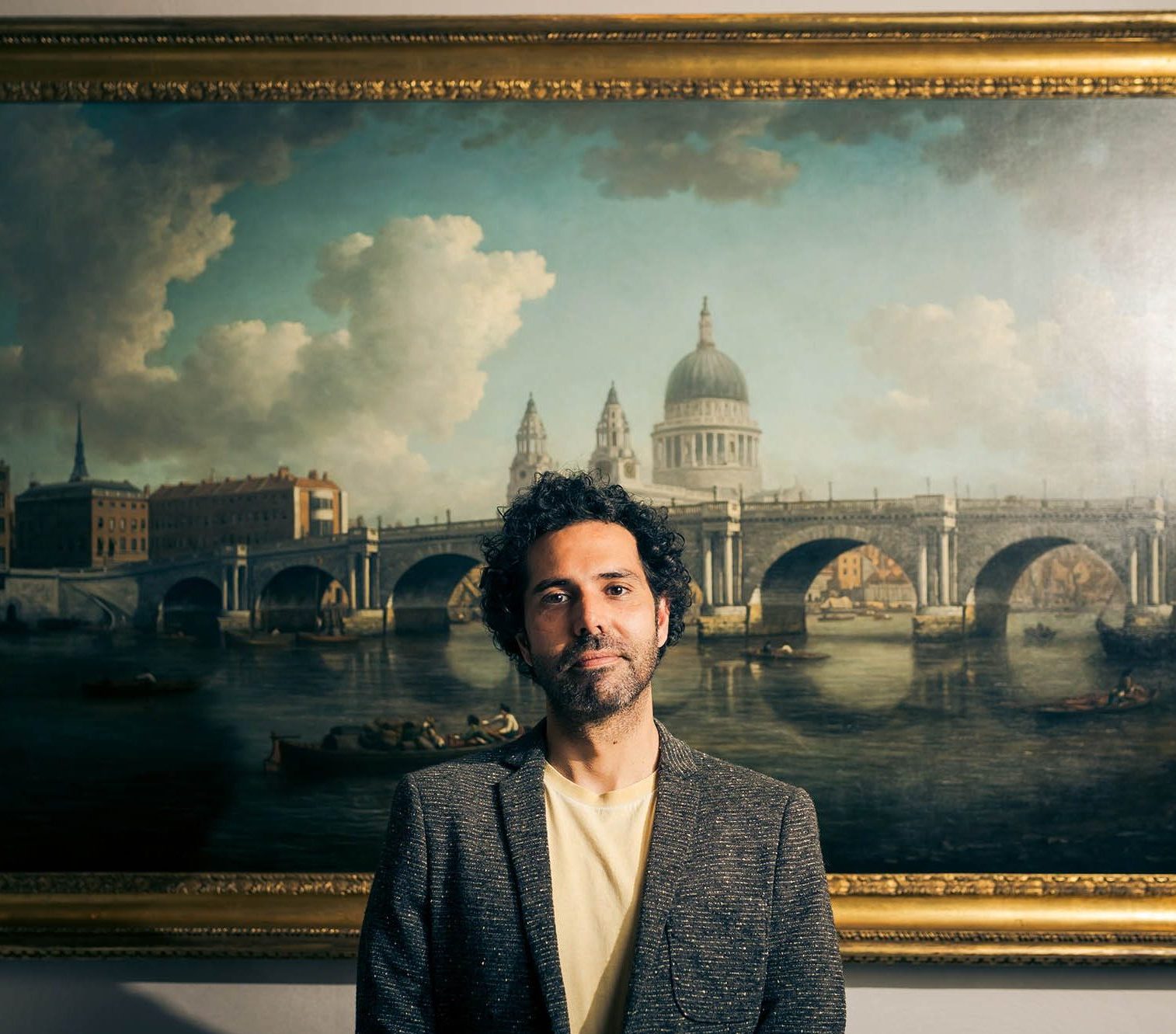
Alumni - Saher Samman
Saher received the Leathersellers’ Emerging Talent Award upon graduating from the London College of Fashion. He currently works as a leather costume modeller for HBO.